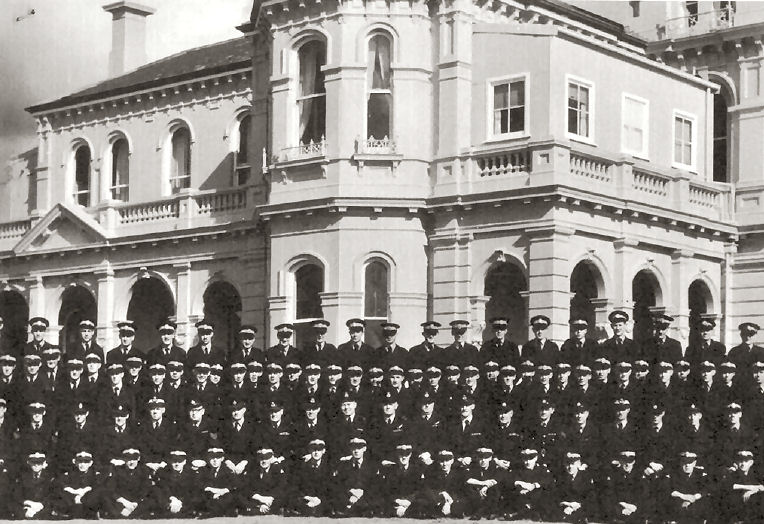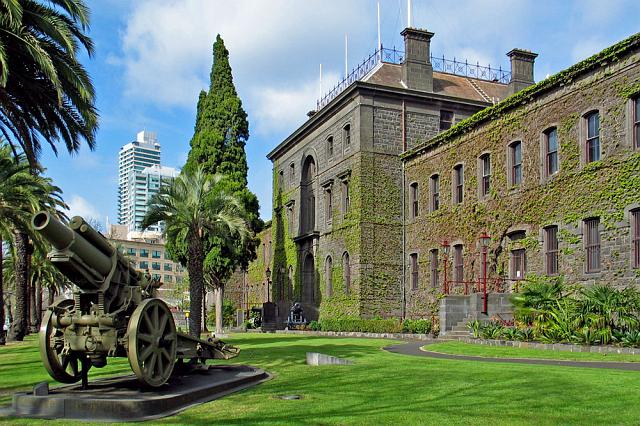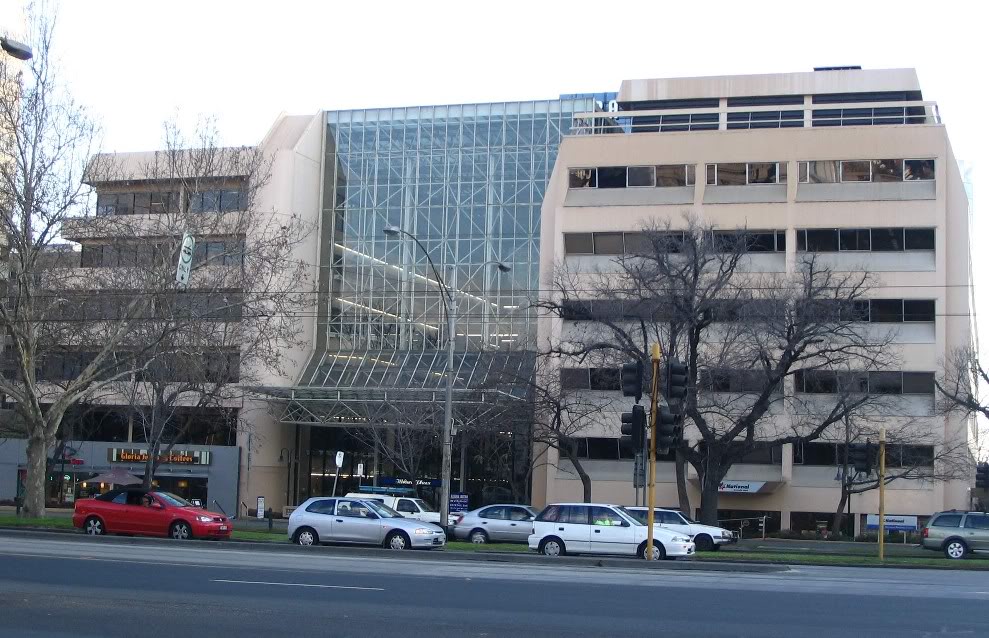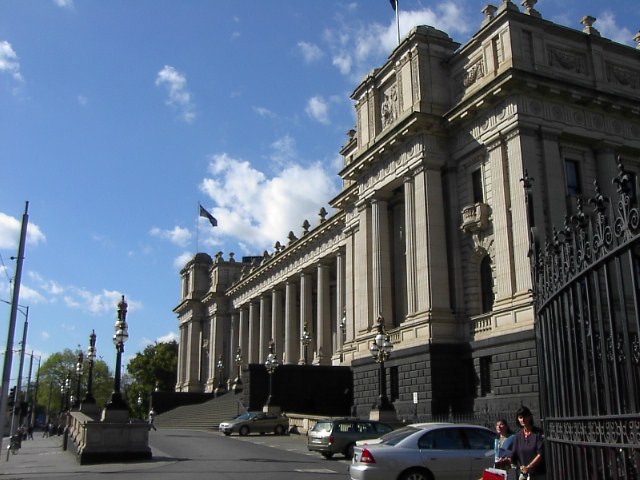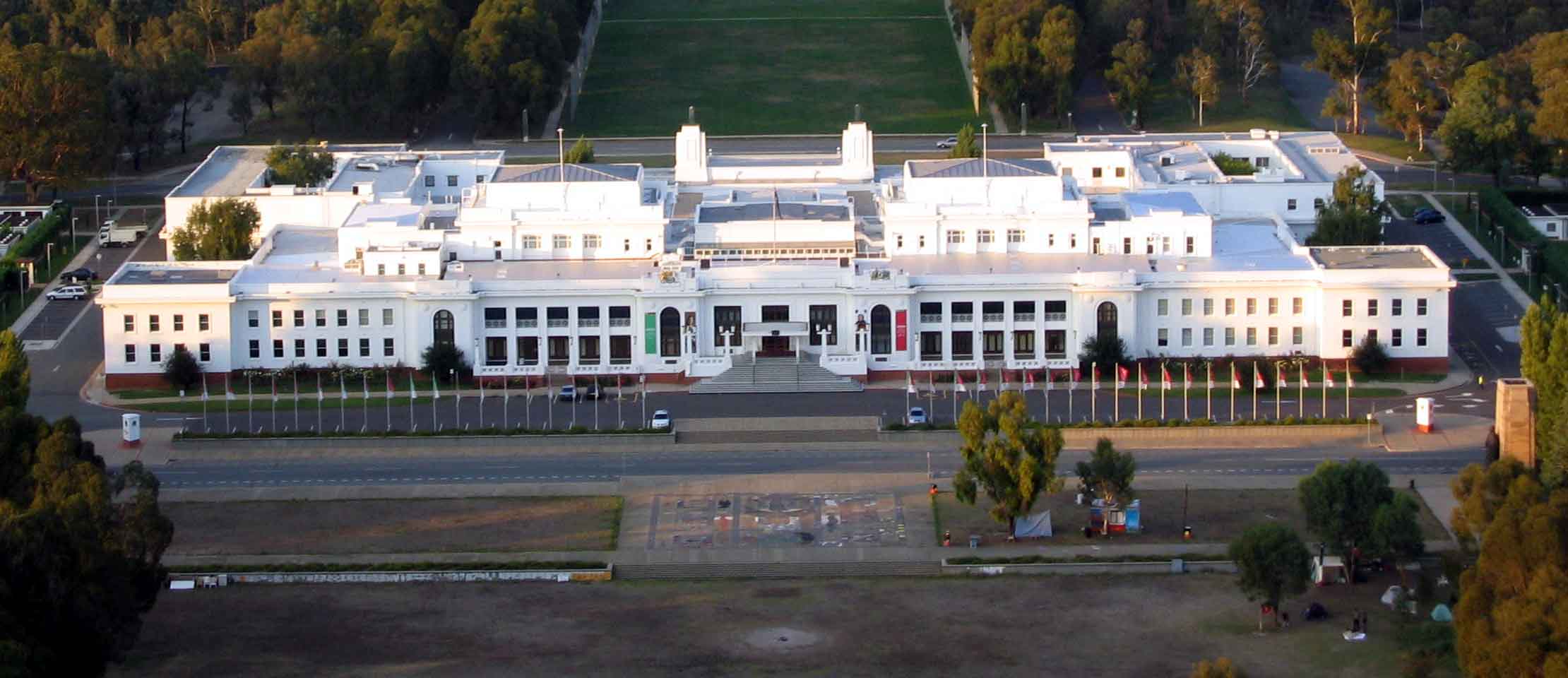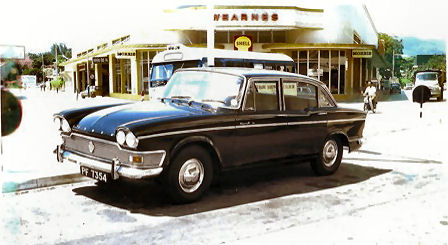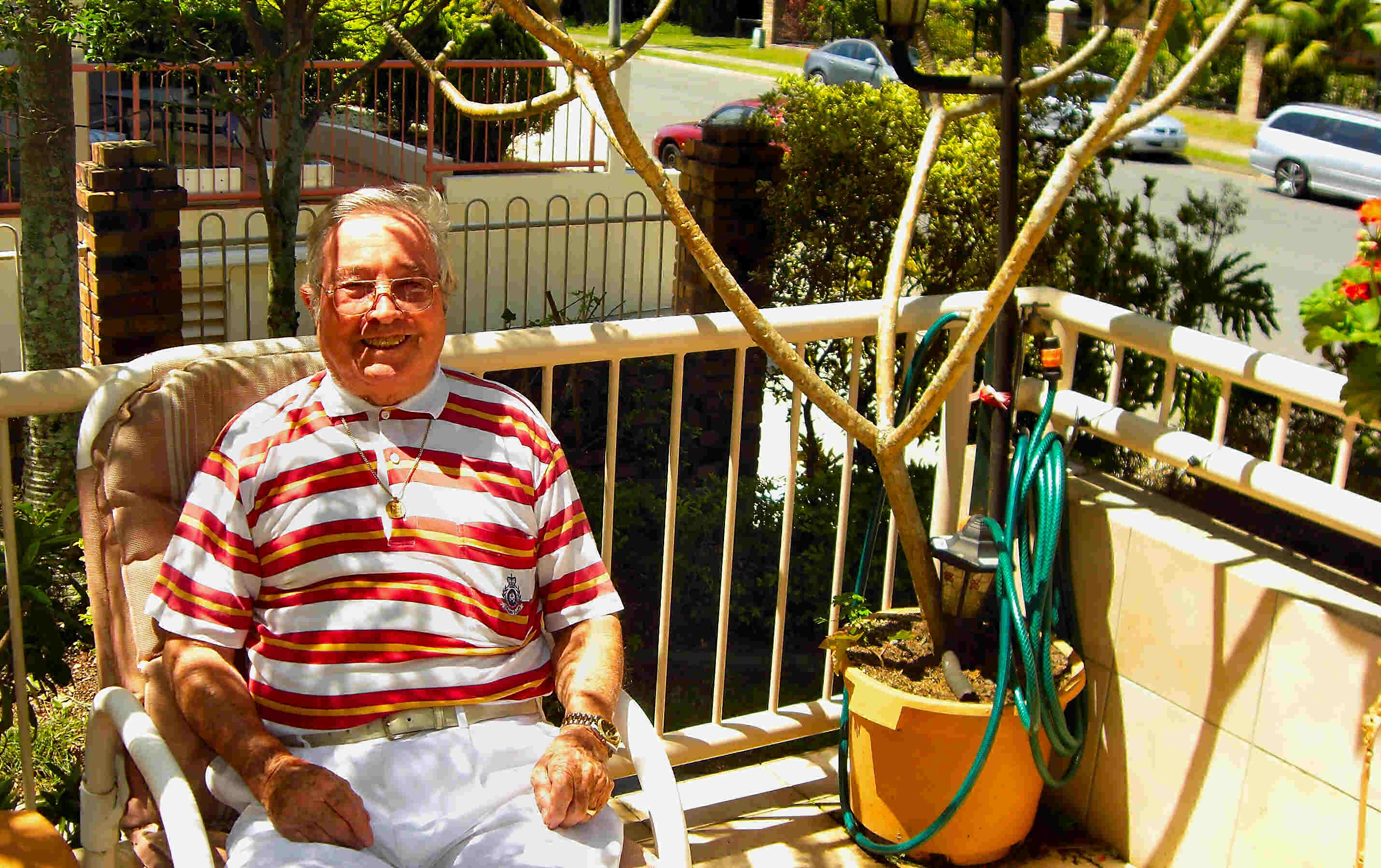|
|
||
|
Radschool Association Magazine - Vol 37 Page 7 |
||
|
Privacy Policy | Editorial Policy | Profit Policy | Join the Association | List of Members | Contact us | Index | Links |
||
|
My Story! |
||
|
|
||
|
Ted Ilton
Ted, born in Laverton in 1927, grew up within sight of the newly established RAAF Base. His dad was the Railway Station Master and Ted was ‘expected’ to follow his dad into the secure working environment of the Victorian Railways, but Ted’s eyes were more for the skies than for the rails. He spent a lot of his young years dreaming of being in charge of one of the Wapitis, Hawker Demons, Bristol Bulldogs or other vintage aircraft which constantly flew over his railway house and school. His father was an honorary member of the Laverton Sergeants’ Mess and most of his parents’ friends had some connection with the RAAF.
As a young bloke, Ted fondly remembers Christmas time at Laverton as his family was invited to take part in the RAAF Christmas Tree party and watch Santa (Cpl Billy Williams) arrive in either a Wapiti or Hawker Demon - throwing out bags of lollies, attached to small parachutes. All the kids would jump up and down on the tarmac in front of the Hangars - (later to become Com Unit and ARDU hangars). Santa’s plane would then land close to the tarmac where he would be swamped by hundreds of excited kids who then sat down quietly, patiently awaiting names to be called, a kiss from Santa and then the unwrapping of presents – a wonderful time.
Laverton in those early days saw many of the “intrepid” aviation pioneers - predominantly male but a few were female. In the early 30’s Charles Kingsford-Smith - (“Smithy,” as he was known throughout the world for his record breaking feats of aviation) seemed to be a regular visitor. The Government of the day and the powers that be of the Royal Australian Air Force - granted him the Honorary rank of Squadron Leader. The bar was later raised even higher with “Smithy” becoming Air Commodore Sir Charles Kingsford-Smith KB AFC MC.
In 1934, the year of the Melbourne Centenary celebrations, his father was transferred from Laverton to Moorabbin, as the Station Master at Moorabbin Railway Station.
Ted remembers that time with sadness, he says, “The sadness was not from our leaving the (rather basic) Railway house, but more the fact that no longer would I be able to watch the familiar red white and blue RAAF roundels on the gleaming silver aeroplanes as they flew overhead, seemingly all day long. It was then that I resolved that one day, I would become an Air Force pilot”!
Unfortunately for Ted, this was not to be.
His time at Moorabbin was still very much within the “Depression Years”. Ted was lucky in that his Dad had a Government job and could be sure of his (small) pay each week. All sorts of economies and thrift had to be exercised in the average family home, including, children needing to be clothed and fed.
In 1936, when Ted was at the ripe old age of 9, his Dad got another posting, this time to the small Goulburn Valley town of Tallygaroopna, about 120 miles north east of Melbourne and not far from Shepparton. Tallygaroopna railway station was the busy rail head for the district’s annual wheat harvest distribution.
The Railways back then had a policy whereby promotion meant posting, if you didn’t want to move you forfeited your posting. Ted’s Dad was ambitious and took every posting and promotion offered to him which eventually paid off as he ended up with the top job as Station Master at Spencer Street railway station in Melbourne.
Ted says “probably one of the most exciting things that happened to me in the first year that we were in Tallygaroopna, was the return of one of the town’s leading business-men, Simon Lang. Simon had been down to Melbourne on a business trip and returned in an aeroplane which landed in the paddock opposite the railway station. I of course, could not get close enough to the plane when it came to a stop, and fondled it as if it was a beautiful animal. The pilot did a number of “joy” flights as they were called in those days - I seem to remember it was twenty shillings for twenty minutes. I could only watch and wish.”
In 1938, Ted’s life became a little more exciting. The country
bread-carter was looking for a Saturday and school holiday gate-opener.
In those days, in country Victoria, bread and
About now Ted’s parents decided to split up and in 1941, he and his sister Joan went with their Dad who had been posted to Warragul. Ted got a part-time job at the Post Office as a Telegram Boy, working after school and at weekends.
In 1943, he passed the PMG entrance examination which meant the
end of school and the
1943 was a momentous year for Ted. The Post Master at Warragul called him in one morning and asked him if he would like to work at the RAAF's Post Office at West Sale, this was like asking a 16 year old young fellow if he’d like a bucket of chocolate ice cream!! Ted couldn’t believe his ears, wow, here was an opportunity to get close to aeroplanes again with the occasional opportunity of a flight – would he ever???
West Sale ‘camp’, which was like so many other Air Force
airfields established throughout
West Sale was disbanded at the end of 1945.
|
||
|
So Ted went to West Sale and found he was working with 3 other PMG blokes, the Post Master, a Postal Clerk and a Postal Assistant who was also 16 years old – as he was. They lived at the back of the Post Office building, in a single room with four beds, a few chairs and the odd table and wash-basin. Fortunately there was an ablution block right outside their back door where they were able to shower and attend to toilet needs. Meals and relaxation were organised as they had the privileges of the Sgts Mess.
The pilots who flew these aircraft, most of whom had joined the RAAF with ideas of flying fighter aircraft in a “shooting war,” considered them ugly, heavy, and old and were not ‘amused’ in having to fly them up and down a 90 mile beach, at 5,000 ft, towing a drogue.
In addition to the large number of Fairey Battles, the aircraft inventory at West Sale also comprised quite a number of Avro Anson’s (right) which were used for gunnery and bombing training, as well as the twin-engined Air Speed Oxfords which were used similarly.
Ted’s job at the RAAF Post Office, which was open 5½ days per week, being closed on Saturday afternoons and Sundays, was to provide mail, stamp sales, telephone and telegraph services and included manning a small switchboard which was busy each evening with ‘trunk-line’ calls from lonely airmen, to wives, girl-friends, families etc.
His time in the Sgts Mess was put to good use as he soon managed to ‘con’ a flight in an Avro Anson which was to be flown by the two young sergeant pilots, neither of whom would have been much older than 19. This was pretty much the measure of things at West Sale and no doubt throughout the RAAF at the time, as most of the pilots were NCO’s and under the age of 20! There were very few officer pilots at Sale except for the executive staff.
Very soon the number of RAAF/WAAAF personnel in the Sale district grew to about 4,000. Bairnsdale was closed and the personnel moved to No. 1 OTU at East Sale and No 4 RAAF Hospital, which was situated in the Sale township, was upgraded to a major surgical and convalescent centre, resulting in more staff. These huge numbers forced some restrictions on local weekend leave arrangements. East Sale would be allowed to go into Sale each second Saturday afternoon and West Sale personnel on Sunday of the same week. Then the reverse would apply for the following weekend.
Weekend leave to Melbourne from either place was undertaken in what was referred to as “road-trains”. Virtually a large semi-trailer with a canvas/tarpaulin type canopy with limited seating. Crude, unsafe – but effective!!!
In 1944 Ted’s time at Sale came to an end and he was transferred to the PMG’s Postal Training School in Flinders Lane, Melbourne where he and about 30 other trainees became inaugural students undergoing a telegraphist in training course. Here they were taught to send and receive Morse code at 25 wpm and to touch type at 66 wpm (no errors) and to operate a telephone switch-board. After finishing the course, Ted was sent to work at the Chief Telegraph Office (CTO) in Melbourne which was the first Telegraph Office in Australia to be equipped with the revolutionary American teletype machines which had a speed of 60 wpm, compared to about 25 to 30 wpm for the older style teleprinters.
In 1945, the Sydney CTO was being equipped with the new machines and Ted and a few others were sent to Sydney to train the local telegraphists on the new equipment. As he had never been any further north than the Murray River, this was a huge adventure for an 18 year old.
Ted (on the right) with his mate Charlie Jones outside the CTO in Sydney.
The plan was for them to be attached to the Sydney office on temporary duty for three months and it was here that he was introduced to that wonderful of beverages – beer!!
At the same time as his time in Sydney was approaching a close, the RAAF were seeking four PMG telegraphists to work in their Meteorological Section at the Cairns airport. Ted and his mate Charlie Jones got to hear about this and applied for the positions and just prior to Christmas 1945, he was on his way to another new adventure. The job involved receiving various meteorological reports by Morse code, sending them in plain language to the RAAF Meteorologists who would produce forecasts for RAAF use.
On arrival, Ted discovered the RAAF had not made up their minds where to house PMG operators. Out at the airfield where they were to work, there were no longer any RAAF quarters. The war-time huts had already been sold by the Defence Disposals Dept and in the City, the Catalina squadron people had taken over “Kuranda Barracks” which was on the Esplanade. After a bit of “umming” and “arring”, the RAAF decided that they should be accommodated at Kuranda Barracks, a decision that met with immense approval from them all. Ted and his mates ‘put up’ with living on the Cairns Esplanade for a few months after which they were moved to RAAF accommodation in the RAAF’s Transmitting Station, on the boundary of the aerodrome where vacancies had become available.
Once settled into work, he noticed that there was a small flying school
operating at the airfield, flying Tiger Moths. His enthusiasm for flying
had grown over the years and it wasn’t long before he arranged a twenty
minute ‘famil’ flight in one of the Tigers, for the princely sum of 10/-
($1). The famil flight was followed by regular lessons and just before
Christmas
He then completed his first solo.
Unfortunately, the cost of flying was too expensive for Ted to continue his lessons, an hour in the air would cost him a week and a half’s wages, so lessons were put on the back burner.
In 1947 Ted’s time in the north came to an end and he was recalled to the Melbourne CTO where he soon settled into the routine with lots of shift work, but he couldn’t get the aeroplane bug out of his head. He longed to join the RAAF and fly their aeroplanes but in 1947 the RAAF were still demobbing people at the rate of 5,500 per week. During the war, the number of people in the RAAF exceeded 180,000 and in 1947 that number had been reduced to 13,000 and even though the chances of being recruited into the RAAF were slim, Ted continued to pester the Recruiting Officer at Kellow Fawkner House, in St Kilda Road. He was told there was a chance that the planned commencement date for aircrew training could be early in 1948 and his best chance was to join the permanent Air Force and later when Air Crew recruitment started, he could just remuster.
Not long after this, Ted received a phone call from the recruiting office and was asked to come in for a chat. He was offered the position of Telegraphist provided he could pass all the trade tests and pass the medical. He sailed through both, signed on and in October 1947, was sent to Laverton for a rookies course, then posted to Ballarat as an instructor with the rank of acting Corporal.
When Australia entered the war on the 3rd September 1939, the personnel strength of the RAAF was 310 officers and 3,179 airmen. As the personnel numbers rapidly increased, 49 additional airfields as well as their individual infrastructures, were constructed. RAAF Ballarat was one of these and its role was to provide wireless training for the Wireless Air Gunner mustering and on the 29th April 1940, the first intake for No l Wireless Air Gunners (WAGS) course commenced training. This consisted of 4 weeks initial (rookies) training followed by 24 weeks wireless training - radio theory - D/F loops - radio practical and a minimum standard of 22 wpm receiving and sending of Morse code. Following this, the trainees spent another four weeks of gunnery training at a various Bombing and Air Gunnery Schools, then graduated as Sergeants on 11/6d ($1.15) per day and posted to the Middle East.
When the training programme ceased in mid 1944, a total of over 10,000 WAGS had been trained No 1 WAGS at Ballarat, No 2 at Parkes NSW and No 3 at Maryborough Qld. No 1 WAGS was disbanded and Air and Ground Radio School was formed in its place in November 1945, however, it remained virtually “moribund” for most of the next two years, because of Government vacillation about the size and extent of a post-war Royal Australian Air Force. There was also some uncertainty about what was needed and where to go with Radio training for the re-structured force.
In the end, the first training courses commenced in February 1947 for Telegraphists, Teleprinter Operators and Signals Clerks. Other training courses to follow were, Radio Servicemen, Radio/Radar Technicians both “Air” and “Ground” (which were to replace the earlier musterings of Wireless Maintenance/Radar Mechanics and Wireless Operator Mechanics). Basic electronics courses for other and allied RAAF engineering trades were also conducted from time to time. The previous aircrew category of Wireless Air Gunner was re-categorised as “Signaller” (with the gunnery aspects having been made redundant). The name of the school was also changed from Air and Ground Radio School to School of Radio. It could be argued, a “cosmetic” name change only rather than a change in function or direction. The first CO (1945 – 47) was Wng Cdr Bill Guthrie
Later in April 1961 as part of the implementation of a Defence rationalisation plan, School of Radio was relocated to Laverton and thus ended a twenty-one year close association of RAAF with Ballarat and its citizens.
After War’s end, the Engineering Branch Radio specialists of the RAAF could foresee, quite dramatic and “explosive” changes taking place in the electronic communications expansion in the second half of the 20th century. This would require a considerable lifting of the skills of the radio engineering trades to a level then not within the training capabilities of an embryo permanent Air Force. Another vital aspect was for the RAAF Recruiting system to be able to compete with the many civil training institutions as far as the preparation for tomorrow’s engineers were concerned.
Pre-war civilian industry apprenticeships, which had been put on hold in the five year long war-time situation, were starting to re-emerge. The RAAF planners decided to adopt a similar scheme being run in the RAF whereby 15 year olds were able to join as “boy entrants” (Apprentices), and after 4-5 years accredited secondary/tertiary trade training, be granted a Trade classification of Fitter, Turner, Machinist or whatever”. An in-depth study was undertaken, the success of which required considerable co-ordination with State/Commonwealth technical colleges in order to provide the required trade accreditation by way of an Associate Diploma. In 1948, an RAAF Radio Apprenticeship and an Engineering Apprenticeship scheme was proclaimed.
Ted’s strongest memory of Ballarat was the cold. They slept and worked in the non-insulated galvanised iron (or tin?) huts fondly known at Tin City. There was a practice during those times, where everyone was issued with an extra great-coat. These were a pre-War model which were had not been issued because they were too short, and which were called “bum-freezers.” The blokes at Ballarat wore them to work and in the winter, wore them to bed too. All buildings had a “pot-bellied” stove, but they did not radiate sufficient heat and it is a wonder the whole place did not burn down as the “cold little sprogs” would always over-stoke the stoves before retiring for the night.
Routine at the School routine was as follows:
|
||
|
· Reveille (it was still called that in 1948) usually at 0600. · Hut tidiness, ablutions (shower, shave and shampoo!!). · Breakfast · Morning parade at 0800 · Inspection of the troops by the CO · Raising the RAAF ensign, then march off to class.
Trainees were restricted to the base and only allowed off-base leave on Wednesdays and weekends.
|
||
|
My wife and I walked past a swanky new restaurant last night. "Did you smell that food?" she asked. "Incredible!" Being the nice guy I am, I thought, "Bugger it, I'll treat her" So we walked past it again.
|
||
|
Despite RAAF Ballarat still having a serviceable airfield with two quite extensive runways and a number of permanent hangars, the role of the place did not require any on-base aircraft. The latter having disappeared when the Wireless Air Gunnery School disbanded in 1945. There was no constant buzzing of aircraft to either break the tedium, or provide a reminder that they were really in the RAAF. However, there were certain aspects of the Training Syllabi which provided a need for some “in-the-air” time. This need was serviced on an “as required” basis from time to time by visiting aircraft from other RAAF bases. 1948 was still very much an era which suffered from WWII shortages and the ownership of a motor-car was still pretty much a dream. Most staff members had motor bikes.
The main recreational pursuits after a day in the class-room, involved
either the Unit cinema
Badminton was also played on the base and it was through this pursuit that Ted met the girl of his dreams and future wife Mattee, who luck would have it, was the owner of a 1948 Hillman Minx.
The photos below were taken on Mattee’s 26th birthday, the day they announced their engagement, 4th October 1949.
|
||
|
|
|
|
|
|
||
|
In mid 1949 the CO decided that there was an imbalance in the NCO Instructor ranks. Most instructors were either Sgt’s or above so Ted and his three acting Cpl mates were promoted to acting Sgt, this was considered necessary to maintain discipline with the trainees. This gave him a terrific morale lift, not only the extra 5/8d per day (about 55 cents - at that time about a 25% increase in pay!) but also that he would be living in the Sergeants Mess with a room of his own, complete with a proper bed, sheets and pillow-cases and, even more importantly, privacy.
During 1950, Ted and Mattee decided they needed a larger car. The Hillman and the bike were sold and through a bit of scrounging and knowing the right people in the right places, a brand new Standard Vanguard was purchased for the ripe old sum of £900 ($1,800).
Ted and Mattee were married on the 26th May 1951, in Ballarat’s Christ Church Cathedral.
Then, just as they were settling into married life in Ballarat, the news came that Ted was to be posted to the Occupation Forces in Japan and on the 11th November, 1951 Armistice Day, he set off to No 391 Base Squadron, Iwakuni. The expected duration of the posting was 15 months and as he was to replace a Sgt working in the Cypher Office, he kept his acting rank.
77 Sqn was also in Japan at that time and in 1950 when the Korean War broke out, it was sent to Korea and fought alongside the USAF. Initially equipped with Mustangs it was re-equipped with Meteors. Due to the extreme climatic and hard conditions in Korea, RAAF ground staff were rotated 3 monthly from Japan. One of the early “personnel” problems with RAAF airmen in Korea was the lack of suitable severe weather protective clothing. Delays in provisioning did take some correcting so it was an occasion too for innovation, “borrowing” and improvising.
Ted was sent to Korea on several detachment to 77 Sqn.
The eventual, and rather remarkable, record held by No 77 Squadron, in the totality of ‘things’ Korean War, was not attained without considerable cost to RAAF pilots and aircraft. No 77 Squadron flew around 19,000 individual sorties in all extremes of weather and, as history has shown, in aircraft lacking the performance of the enemy’s. It was for this latter reason, that their initial air-to-air role was converted to one of ground attack. Fighter pilot casualties at the end of the conflict were:-
· 30 killed in action, · 8 killed in flying accidents, and · 2 died as a result of accidents on the ground.
Aircraft losses were extremely high, the Squadron losing 54 of their 90 Meteors during the period of the war.
Iwakuni had been a Japanese Naval Air Station during the war and there was still some evidence of this with one of the quite large hangars still showing signs of bomb-damage and disused for this reason. The hangars and other buildings on the Base were unpainted concrete or some of wooden structure.
Because the Base was also the civil airport for Iwakuni, and quite often civilian passengers stayed overnight, the RAAF Movement Control Office worked out of a large building which they called The Transit Hotel, where incoming/outgoing, passengers both RAAF and civil were processed by either the RAAF Movements staff, or by Qantas ground staff as appropriate.
|
||
|
|
||
|
Flt Lt Ned Grose, F/O Ted Leach, Cpl Ted Ilton - On the tarmac Pusan, Korea. Sep 1952
|
||
|
|
||
|
The Airman’s Mess, Iwakuni.
|
||
|
|
||
|
|
||
|
Unfortunately for Ted, he ran into a Flt Lt E.C.Grose who was the Wing Administrative Officer. Grose knew that Ted had been acting Sgt at Ballarat and upon hearing that he was still acting, insisted that the 3rd hook be removed and that Ted leave the Sgt’s Mess and go live in the Airman’s Mess as a Cpl. (Well done Grose – hope you’re proud of that – tb)
RAAF Iwakuni Australian Rules Football team. 1952.
Then, after Ted had completed 9 months in Japan, he received notice that he was to return to Australia with a posting to Rathmines for Officer pre-selection training. This was a very welcome surprise as it shortened his Japan stay by 6 months and he was going home to his wife.
Back in 1952, the RAAF was in disarray. The 1945-1947 effects of the almost “maniacal” speed with which the officer demobilisation policy had been handled, coupled with its seeming indiscriminate discarding of so many eminently suitable war-service officers, who were discarded even though many had indicated a wish to serve on in the Permanent Air Force, set the scene for some urgent re-thinking of the officer manning needs. This urgency gathered further, and unexpected, momentum with the onset of the Korean war. The resultant increased RAAF manning needs, particularly for officers in each of the Branches of the Officer establishment tables, not only set in motion the appointing of suitably qualified people from “civvy street” but also the commissioning process of selecting, en masse, suitably qualified and motivated serving Airmen, NCO’s and Warrant Officers. What then transpired, and in order to ensure adequate and undoubtedly additional scrutiny for “officer potential”, was a pre-selection process for further “screening” of the large number of “Airmen Entrants” seeking elevation to the commissioned ranks of the RAAF.
An Officers’ Training School had recently been established at Rathmines on the shores of Lake Macquarie, which was only a few miles south of Newcastle. The “Pre-Selection Course” process commenced in 1951 and each student would live in and have all the privileges of the Officers Mess. For some reason though, they continued to wear their Airman/NCO/WOff badges of rank. The only distinguishing feature identifying these potential officers from other airmen on the base was the wearing of a white arm-band. The Syllabus embraced three broad aspects:-
A businessman had a tiring day on the road. He checked into a hotel and, because he was concerned that the dining room might close soon, left his luggage at the front desk and went immediately to eat. After a leisurely dinner, he reclaimed his luggage and realized that he had forgotten his room number. He went back to the desk and said to the receptionist, "My name is Henry Davis, could you please tell me what room I am in?" "Certainly," said the girl. "You're in the lobby."
Number 3 Officer Selection Course, Rathmines. August, 1952.
|
||
|
|
||
|
|
||
|
After Ted finished his course, he was hoping for a return to Ballarat, but the RAAF had other ideas and he was sent back to Japan. Then, just to prove they really didn’t have a clue what they were doing, in December 1952 he was posted back to Base Sqn at Laverton.
Back in Australia Ted was sweating on hearing from the selection board and on the 7th January 1953 a telegram finally arrived telling him to report to Rathmines for Officer training in the Special Duties/Administrative Branch.
When the RAAF was formed in 1921, the Officer rank in the RAAF was copied from that adopted by the RAF towards the end of the 1914-18 war.
The novice pilot, having just received his wings, was a Pilot Officer. One with twelve months’ experience became a Flying Officer who after three years became a Flight Lieutenant commanding a flight of up to four aeroplanes. The Squadron Leader commanded a squadron of two or more flights and the Wing Commander two or more Squadrons. Two or more Wings became a group and thus the rank of Group Captain. Ranks above Group Captain became known as “Air” rank officers who occupied the top echelon positions within the Air Force. Then with a rapidly increasing need for a mix of aviation specialists at an officer management level, Branches and Categories were formed. Aircrew became the General Duties Branch, the non-flying were titled Technical, Equipment, and Administration/Special Duties branches.
|
||
|
No 7 Officer Training Course - RAAF Base Rathmines. 12th January - 30th March 1953
|
||
|
|
||
|
Back Row L-R: F O's Paternoster, Potter, Henze, Cpl llton, Sgt Warnock, W/0 Puxty, W/0 Mahoney, LAC Wheal, F/0 Dawson, W/0 Callinan, Second Row L-R: Sgt Riggs, LAC Goodley, Sgt O'Donoghue, W/O's Townsend, Wishart, Sgt Mann, Cpl Bernasconi, Sgt's Malone, Ryan. Third Row L-R: F/0 Cumes, W/O's Murray, Cameron, Robertson. F/0 Ford, Flt Lt Thrum, Sgt Rhodes, F/0 Brighton, LAC Hazel Front Row: P/0 Henderson, W/0 Brown, Fig Off Podger, P/0 Crough, Fl Off's Hansen, Black, W/O's Chaplin, Geddes, P/0 Cahill. (Absent Fl Off's Davies, Foley, Stewart and W/O Furlonger)
|
||
|
The number on Course totalled 40 comprising 15 already commissioned officers and 25 "airmen entrants". The commissioned men were commissioned straight from ‘civvy street’ and were required to undergo officer training.
Just prior to the trainees finishing their course, the Federal Government announced all sorts of budget cuts, including some affecting the Defence Forces. Ted was called into the CO’s office and advised that “commissioning into the Special Duties Administrative Branch had been put-on-hold until further notice and “Cpl Ilton” is therefore to be given the option of transferring to Technical (Radio) Branch or resuming normal duties as a Corporal Telegraphy instructor at Ballarat”. This was a hell of a let-down for him, but also a no brainer, he, of course, chose the Technical Branch.
So, on April Fool’s day, 1953, 15 newly commissioned officers set off for the RAAF’s School of Technical Training at Wagga to be part of No 1 Specialist Officers Engineering Course. The remaining 26 graduates proceeded to a variety of RAAF Bases through-out Australia.
|
||
|
No 1 Initial Specialist Officers (Basic) Engineering Course RAAF School of Technical Training Wagga. (April to November 1953)
|
||
|
|
||
|
Back Row L-R: P/0 Hazel, Flg Off’s Brighton, Donoghue, P/0 Bernasconi, W/0 Ewing (staff) F/0 Mahoney, P/O's Warnock, Henderson Middle Row :- Sgt's Younger, Heazlewood (staff), Flg Off Wishart, WgCdr Taylor (Chief Instructor) P/O's Malone, Ryan, Flg Off Robertson. Front Row :- P/O's Stewart, Wheal, llton, Rhodes
|
||
|
A man wrote a letter to the ATO: "I have been unable to sleep knowing that I have cheated on my income tax. I understated my taxable income and have enclosed a cheque for $200.00.
If I still can't sleep, I will send the rest."
|
||
|
After Rathmines, Ted was to spend the next 18 months on a succession of courses. He was at Wagga for about 9 months then back to Ballarat for a Radio Officers Course for most of 1954.
Back at Ballarat, he did a deal with the local theatre operator and swapped the Vanguard for a magnificent Mark IV Jaguar, a car he had been eyeing off for some time. It became his pride and joy.
Then, just after Easter in 1954, and after completing No 1 Specialist Officers Radio Course, Ted was posted to 1AD at Laverton as their Radio Officer. He and Mattee sold their home in Ballarat, bought another in East Ormond and settled into life at Laverton.
In November 1954, Ted realised that Radio Tech stuff really wasn’t his thing so he applied for a transfer to Admin duties. The CO and a few others at 1AD heartily agreed and Ted’s transfer was approved quick time and within a few weeks he was posted to Radio Appy school at Frognall where he served as the Adjutant from November 1954 to August 1957.
|
||
|
|
||
|
Signs your life is about to change
a. While watching the news, you spot your spouse marching in a Gay Pride parade. b. The bank notifies you that your paycheque has bounced.
|
||
|
Appy Squadron shared Frognall with No 1 Telecommunications Unit (MTU) and was a most un “Air Forcey” place to work. The only sign of anything Air Force, other than the RAAF uniformed personnel, was the RAAF Ensign fluttering from the yard-arm on the basket-ball court size parade ground. The HQ was in the grand old mansion with the Mess facilities, the Sick Quarters and the Pay Office housed in separate buildings.
And what do they say about “every dog has his day….” Flt Lt Grose, the ‘lovely’ man who, when Ted was in Japan, insisted he remove his third stripe, had been the Adjutant at Appy Squadron but was moved out due to personality conflicts. Ted was his replacement, who, on taking up the office was promoted to acting Flt Lt. Apart from the ‘howzatt” aspect of the promotion, it also came with a substantial pay increase. This time he held the acting rank until make substantial 2 years later.
In the late 50’s, Frognall was the home of the Radio Apprentices for the first three years of their apprenticeship. 3 courses were run at any one time, Junior, Intermediate and Senior with about 30 bratts on each Course. Their academic programme was carried out at RMIT and they would spend each day at the Institute in Swanson Street Melbourne. They would leave Frognall each morning in a convoy of buses, spend the day at RMIT - breaking for lunch at the then Trans Australia Airlines (TAA) cafeteria immediately opposite and return to Frognall at about 5.pm. Subjects of General Service Knowledge, Drill, Customs of the Service etc would be fitted-in at Frognall with associated lecture programme breaks at RMIT. They also had to attend supervised study programmes at Frognall after the evening meal.
There were some quite significant RAAF staff supervisory aspects involved with relation to the maturing characteristics of boys aged between 15 and 17. It was often said that staff members had to be surrogate Mum, Dad, and religious pastoralist. With the majority of the lads emanating from rural areas, and quite a number from broken homes, or from sheltered home environments, the individual fostering needs for each apprentice were seldom the same. A common thread however, related to the individual immaturity (and growing) personality of each Apprentice. There were three Flight Commanders, of Flying Officer rank, each being the “Course Mother” for the three apprentice group levels. Ted was responsible for the overall administration of the School, however, this did not completely divorce him from some of the surrogate parental aspects, particularly if one of the Flight Commanders was absent.
Apart from being taught the technical side, these young blokes had to learn the “Customs of the Service” and not having a home environment from which to learn, needed to be taught general etiquette, i.e table manners, general politeness and courtesies extended to ladies. There was a requirement for the junior and intermediate courses to write home at least once a week and this was policed by having them log each letter in the weekly mail despatch book. On some occasions, sadly, the staff found the only thing enclosed in the envelope was a blank page!!
|
||
|
You hear that your dentist has been arrested for using radioactive material as tooth-filling.
|
||
|
All RAAF bases were accustomed to having a chapel of some sort and although it is fair to say that none of them had been purpose built, in the majority of the cases they were converted war-time tin huts. That is, converted on the inside only, and then only basically. The exteriors looked no different to any other of the war-time structures. Frognall was no exception. Services were conducted each Sunday by the then Principal Air Chaplain, R.C. Russell (affectionately known to one and all as "THE BISH") who lived only a block or two from Frognall. These men wore the rank of Air Commodore - usually with a normal uniform collar and tie rather than the clerical collar - the only clerical badge being a small cross on the shoulders of their tunic. The Chaplain that was attached to the chapel at Frognall had a very important task doling out pastoral care as well as providing a very broad shoulder for many of the young men who, for the first time in their young lives, were alone and a long way from home. These men, who held the position of Base Chaplain, provided an indispensable and unforgettable service.
While at Frognall, Ted was aware that the Appy squadron did not have an annual magazine. He reasoned that as most other educational institutions, High Schools, Colleges etc, had a magazine which documented the studies and triumphs of the students and which would became a treasured memento of the student’s time at the institution. He put the proposition to the CO (Sqn Ldr Moore) who put it to HQ Training Command which gave it their blessing.
An annual magazine was launched and remained a popular annual event which was continued when Apprentice School was absorbed into the School of Radio at Laverton.
At that time, Appy Squadron did not have a graduation parade, there was nothing to indicate to the young men that their 3 years’ study was at an end and they were about to join the ‘real’ Air Force. Ted saw this as a huge oversight. He thought there should be ‘something’ to proudly commemorate the young men’s successful graduation. Something to which the student’s parents could attend and which would demonstratively mark the finalization of 3 years of hard work and dedication. He would do something about it.
He approached the CO who once again gave him the green light. He approached GTV 9 and asked them if they would be interested in covering such an event, they jumped at it, and so it was arranged. The parades became a tradition and each Appy course thereafter had a formal passing out parade.
|
||
|
Your fourteen year old daughter suddenly develops a craving for pickles and ice cream.
|
||
|
After three years at Radio Apprentice School at Frognall, Ted was posted to Maintenance Command HQ in Albert Park as the Junior Staff Officer. He was there only 3 days when he was sent down St Kilda Rd to Victoria Barracks as a Personnel Staff Officer..
Ted spent twelve months in the RAAF’s Personnel Branch at Vic Barracks which back then was known as the “Department of Air.” The more descriptive name, RAAF HQ, was not used until late in the 1960’s or even early 1970’s by which time it had been relocated to Canberra.
Back then the RAAF had 3 Command Structures which were based very much on the Royal Air Force. The three Commands, each with an Air Officer Commanding with the rank of Air-Vice Marshal, were the Home, Training and Maintenance Commands. The latter two names are self-descriptive, but the former, although called the Home Command, was in fact the Operational Command of the RAAF. Maintenance and Training Command HQ’s were situated at Albert Park Barracks while the Home Command was located at Glenbrook in NSW. The overall Command structure was overseen by the Department of Air at Victoria Barracks in Melbourne with an accompanying Political Master - the Minister for Air.
Victoria Barracks, which was built in 1825, is an amazing building. The RAAF had been established there since its formation in 1921 though uniformed personnel from the Army and Navy had been there since its establishment. It also housed numerous public servants from various Defence Departments. The RAAF had people there from all its branches, i.e. General Duties (Air Staff), Equipment (Supply), Engineering and Personnel. The overall RAAF boss at Vic Barracks was titled the Chief of the Air Staff and in the late 90’s this title was changed to Chief of Air Force (CAF). Each Branch was headed by an Air Vice-Marshal and these appointments, together with a senior Public Servant (Secretary of Department of Air), formed what was then called the Air Board under the umbrella of the Minister of Air who in turn was responsible to the Minister for Defence and the Cabinet.
|
||
|
As the RAAF was a “Johnny come lately” at Vic Barracks, there were no facilities for an RAAF Officers Mess. The Army had their Mess planned when the building was built back in the 1800’s and originally the Navy and later the RAAF shared these facilities.
The rapid expansion of the RAAF during WWII demanded the establishment of a separate RAAF Officers Mess in the close vicinity of the Barracks.
About that time, a magnificent old 19th Century mansion, “Illoura” (right) situated at 426 St Kilda Road, was on the market and the RAAF Officers at Vic Barracks formed a trust and purchased the building. It only required minor alterations to provide Messing facilities and limited live-in accommodation for single and/or unaccompanied Melbourne based RAAF Staff Officers.
Unfortunately, in the early 1970’s, the RAAF Trustees decided to sell the building and build a new Officers Mess in Coventry Street, immediately opposite Victoria Barracks. The buyer/developer pulled the beautiful old building down and in its place built the office block below.
|
||
|
|
||
|
|
||
|
In
mid 1959, the entire Department of Air at Victoria Barracks, both
uniformed and civil personnel, was transferred to Canberra to the
recently constructed Russell Offices. The move had been planned back in
1927, to coincide with the Australian Parliament moving from
The eventual move was not so much a new experience for the uniformed members at the Barracks as most Servicemen were used to being moved around but it was a big deal for the civilian workers, most of whom had never left Melbourne. It involved many thousands of people, all of whom had to be housed.
As a result many new Canberra suburbs were developed radiating out North, South, East and West from the Capital’s Civic Centre, suburbs such as Dixon, Campbell and O’Connor were built to house these people.
|
||
|
|
||
|
|
||
|
Then, in 1960, just as Ted and family had settled into life in Canberra, the RAAF decided it was time for him to leave and he was posted to Base Squadron Butterworth as the Adjutant. Back then the accepted method of travel to Butterworth was via a 12 to 14 day cruise travelling First Class, Sydney to Penang. The normal means of travel on all overseas postings was by sea, if one was lucky enough to get a posting to the U.K it meant a much longer cruise of five to six weeks.
|
||
|
What a way to go on a posting!!
Ted with wife Mattee and children Gary aged 5 and Robyn aged 2.
|
||
|
|
||
|
Butterworth also came with a fully furnished Married Quarter as well as a cook, ahmah and a gardener. Penang was also a haven for the purchase of either a new car at an almost tax-free price or if a new car was-out-of-reach then American second-hand cars, generally only 12 months old, were extremely cheap. Ted bought a 4 year old Dodge for £400 ($800) which he took back to Australia with him and which he kept for a further 8 years.
Shortly after Ted had arrived at Butterworth, the OC, Air Cdre Ford, summoned him to his office at Air Base HQ. where he was advised of a forthcoming visit of the King and Queen of Thailand to Malaysia. This visit was to include a tour of RAAF Base Butterworth and the OC appointed Ted as the RAAF Base Protocol officer for the visit. Ted says there was an intense twelve months of planning in which he was intimately involved. It not only included monthly Penang State level Meetings but also a quarterly variety at K.L in the Parliamentary buildings. He said that it all went off without a hitch at Butterworth and provided some proud and unforgettable moments for him.
An amusing incident occurred while he was there. The OC at the time was Air Cdr Geoff Hartnell and he arranged for a permanent memento to be presented to the Commander of the departing RAF V Force Bomber Squadrons. He had an exquisite pennant made, highlighting the three RAF squadrons and arranged to present it to the RAF Wing Cdr at a formal dining-in night. Unbeknown to everyone, a young RAAF fighter pilot had got the embroider to emblazoned on the back the words “All Pommies are Bastards”. With a great flourish, the OC presented the pennant to the huge amusement to everyone, including the RAF Wing Cdr. Unfortunately for the young pilot, the OC didn’t see the joke and the young bloke was on the next Herc back to Oz with his docs duly noted.
In 1963, Ted was posted once again, this time back to Point Cook to the RAAF Academy as the AdminO and two years later, in 1965, he moved across to the Officers Training School to instruct in Air Force Law. In 1966 he was promoted to Sqn Ldr and in 1967, it was time for another move, this time north to what was then called No 1 Central Reserve at Kingswood NSW – near Penrith. Its primary function was to provide storage and supply of munitions and had been re-activated in the early 1950’s with the outbreak of the Korean War. It later became the No 1 Central Ammunition Depot.
In 1968 it was time for yet another move, this time back to the Staff College at Fairbairn to undertake a Command and Staff Officer Course after which, in 1969, he was sent back to Russell Offices as the Personnel Staff Officer.
|
||
|
In 1971 he was promoted to Wing Cdr and once again, posted – this time to East Sale, back to where it all began. This time, though, he was the Admin Staff Officer and the CO of Headquarters unit. He stayed there until 1972 when, after 12 years, it was time to go back to Butterworth as the Senior Administrative Office, Base Squadron. He stayed there for about out 6 months, until getting an ‘upstairs’ posting to be the Admin Staff Officer and CO of the RAAF HQ unit at Butterworth. This time he bought a near new Humber Super Snipe which he said earned him more salutes than he’d experienced before or since – the car was the same as the OC’s.
He returned to Australia in 1974 with a posting back to Vic Barracks, this time as Staff Officer Publications – a job he said wasn’t really his choosing….
In 1976 he was on No 21 Industrial Mobilisation Course. This was a “Think Tank” type of organisation and comprised 2 RAAF Wng Cdrs, 2 Navy Commanders, 2 Army Half Colonels and 24 civilians, each of whom was of C.E.O status in either of the Industry or Public Utility which they represented. Ted is quick to indicate that this was definitely one of the highlights of his 30 years’ service in the RAAF”
In mid-1976, and after 3 decades of RAAF service, Ted felt it was time to “pass the baton." In a sense his son Gary, who had joined the RAAF in 1974 has done some “baton carrying,” he has reached Wing Commander rank and is currently (November 2011) Deputy Commander of No 13 Squadron RAAF Darwin.
Not long after his retirement in Melbourne he was offered the (unpaid) newly created position of Regional Commandant of the RAAF’s Air Training Corps in Victoria, which he accepted. He also found time during his early retirement years to form the RAAF Staff College Association for its then Graduate List numbering 1400 accredited Members. He became the Association's Founding President.
He eventually retired, moved to Queensland and now lives a relaxed life on the Gold Coast, he’s active in the local chapter of Probus, plays the odd bit of golf and looking back says he wouldn’t have changed one thing. He says having never achieved his childhood ambition to become a RAAF pilot was a shame, but it was not meant to be - and as they say, "That's Life!!
|
||
|
A young doctor had moved out to a small community to replace a doctor who was retiring. The older doctor suggested that the young one accompany him on his rounds so the community could become used to a new doctor. At the first house a woman complains, 'I've been a little sick to my stomach.'
The older doctor says, 'Well, you've probably been overdoing the fresh fruit. Why not cut back on the amount you've been eating and see if that does the trick?' As they left, the younger man said, 'You didn't even examine that woman? How'd you come to the diagnosis so quickly?'
'I didn't have to. You noticed I dropped my stethoscope on the floor in there? When I bent over to pick it up, I noticed a half dozen banana peels in the trash. That was what probably was making her sick.'
'Huh,' the younger doctor said. 'Pretty clever. I think I'll try that at the next house.' Arriving at the next house, they spent several minutes talking with a younger woman. She complained that she just didn't have the energy she once did and said, 'I'm feeling terribly run down lately.'
'You've probably been doing too much work for the Church,' the younger doctor told her. 'Perhaps you should cut back a bit and see if that helps.'
As they left, the elder doctor said, 'I know that woman well. Your diagnosis is almost certainly correct but how did you arrive at it?'
'I did what you did at the last house. I dropped my stethoscope and when I bent down to retrieve it, I noticed the preacher under the bed.'
|
||
|
||
|
|
||

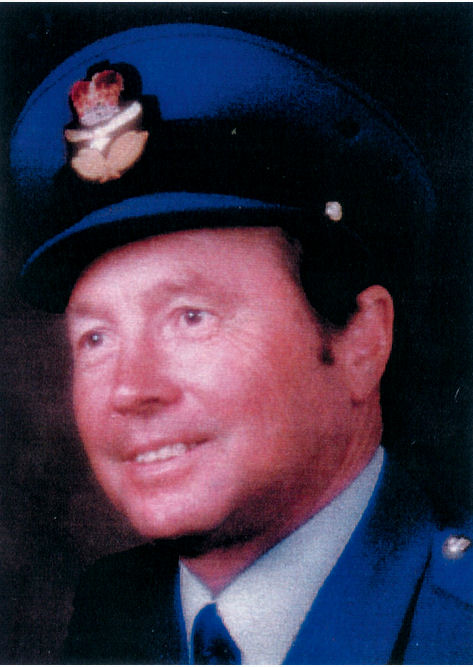
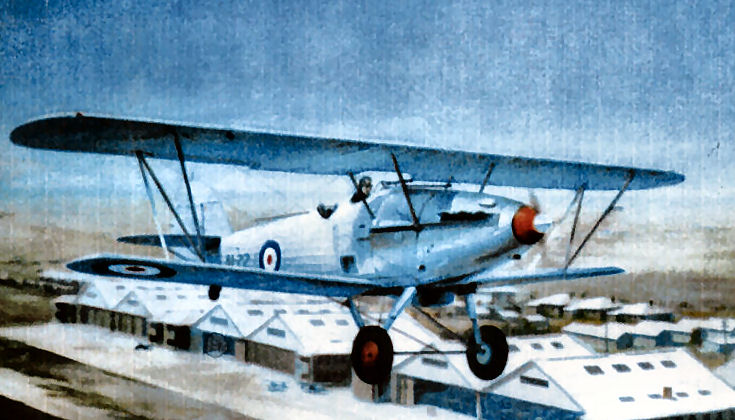
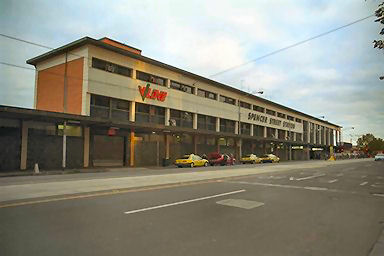
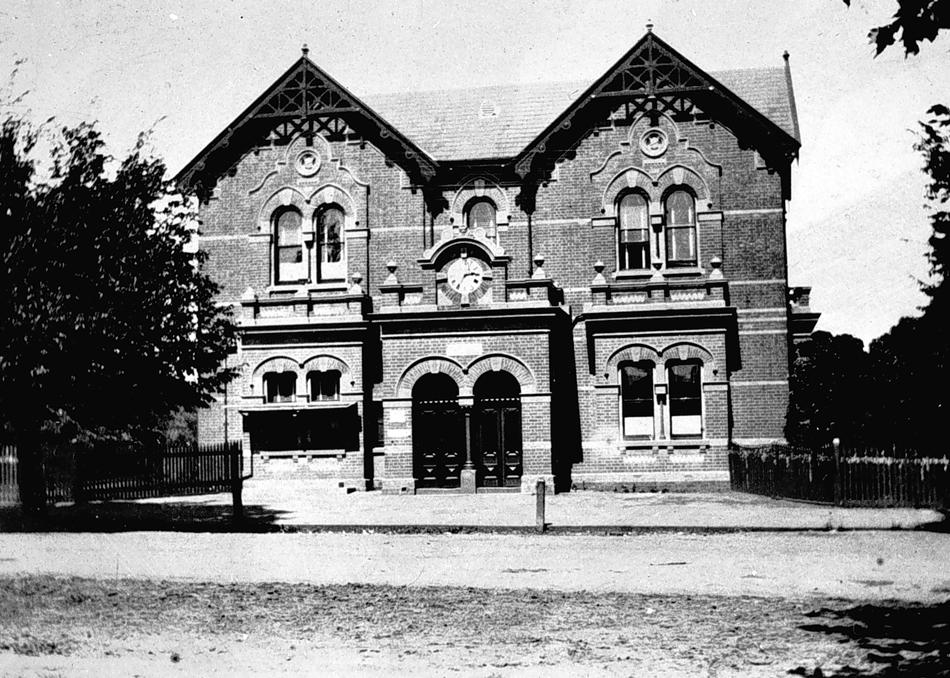
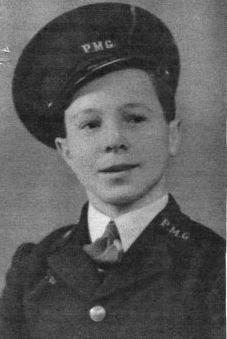 start
of permanent employment on the princely sum of £77 ($154) per year.
After passing the Morse Code test, that sum was raised to £82 ($164) per
year. Being the war years, Ted had the occasional need to deliver a
‘Next-of-
start
of permanent employment on the princely sum of £77 ($154) per year.
After passing the Morse Code test, that sum was raised to £82 ($164) per
year. Being the war years, Ted had the occasional need to deliver a
‘Next-of- One
of the aircraft stationed at West Sale was the Fairey Battle (left), an
aircraft long since dispensed with by the Royal Air Force and relegated
to the role in Australia of towing targets for eager air-gunners at
which to shoot!!
One
of the aircraft stationed at West Sale was the Fairey Battle (left), an
aircraft long since dispensed with by the Royal Air Force and relegated
to the role in Australia of towing targets for eager air-gunners at
which to shoot!!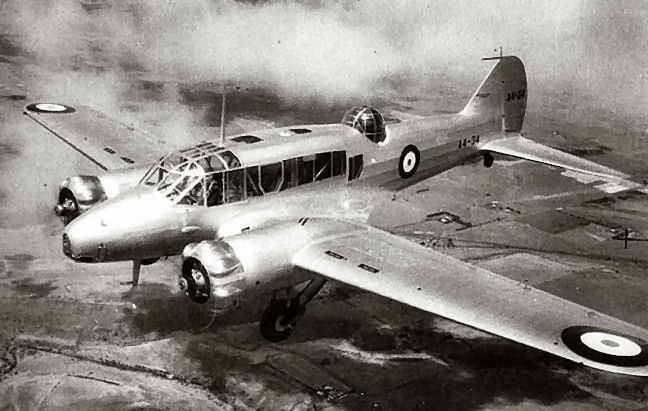
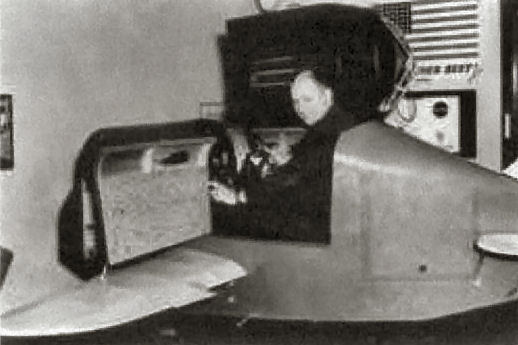 The
flight was ostensibly a dual cross country check of one of the pilots
and set the seed, Ted was hooked on flying. He also got to know the Link
Trainer Sergeant instructor and spent as much time as he could ‘flying’
the “Link”. The Link was designed to allow pilots to practice their
instrument flying techniques, pilots would climb into the “cockpit”, the
wooden canopy lid would be lowered and the whole “flight” would be
undertaken without any external visual reference from the cockpit.
Although a basic machine, flight attitudes and movements within the
simulator were quite realistic.
The
flight was ostensibly a dual cross country check of one of the pilots
and set the seed, Ted was hooked on flying. He also got to know the Link
Trainer Sergeant instructor and spent as much time as he could ‘flying’
the “Link”. The Link was designed to allow pilots to practice their
instrument flying techniques, pilots would climb into the “cockpit”, the
wooden canopy lid would be lowered and the whole “flight” would be
undertaken without any external visual reference from the cockpit.
Although a basic machine, flight attitudes and movements within the
simulator were quite realistic.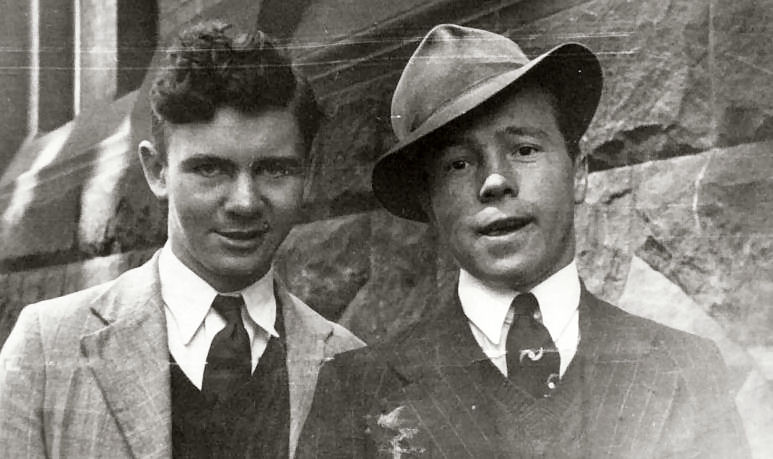

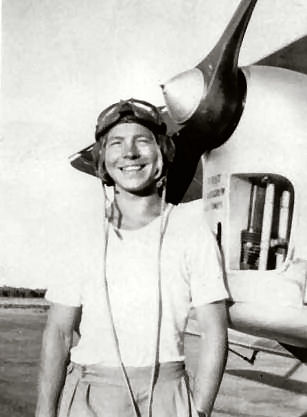

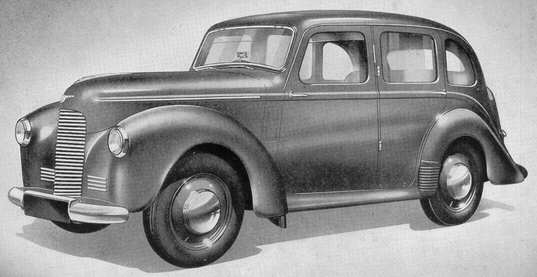
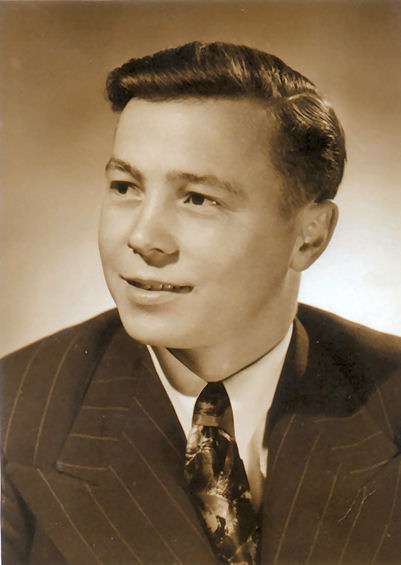
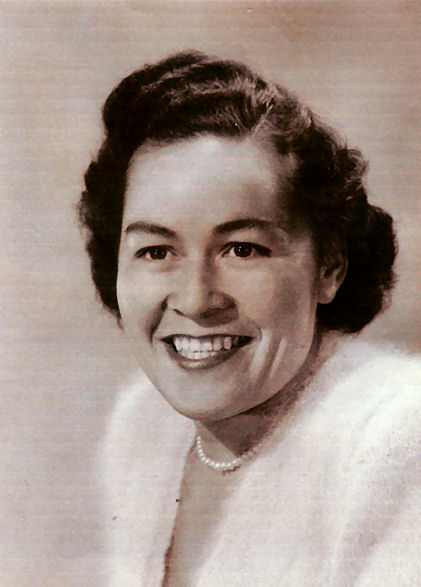
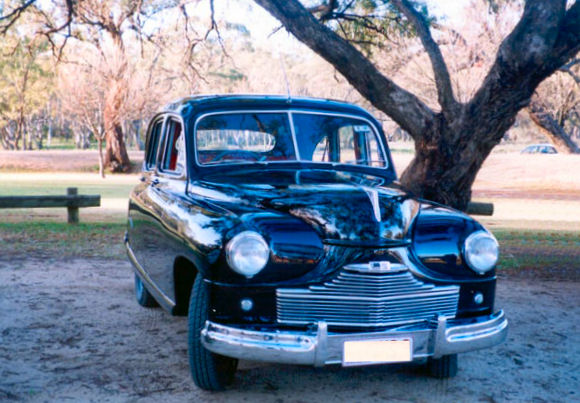
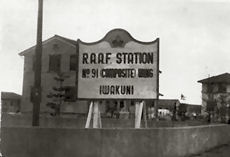
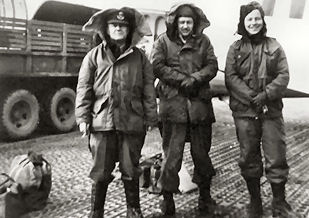
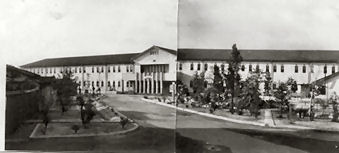
%20Australian%20Rules%20Football%20team.jpg)
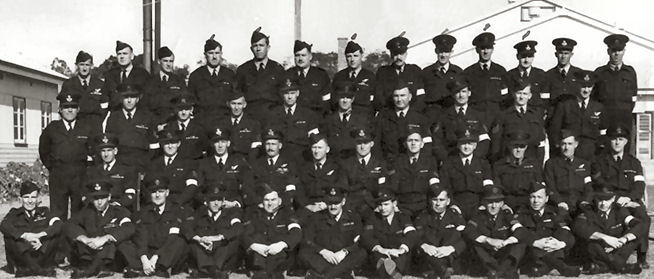
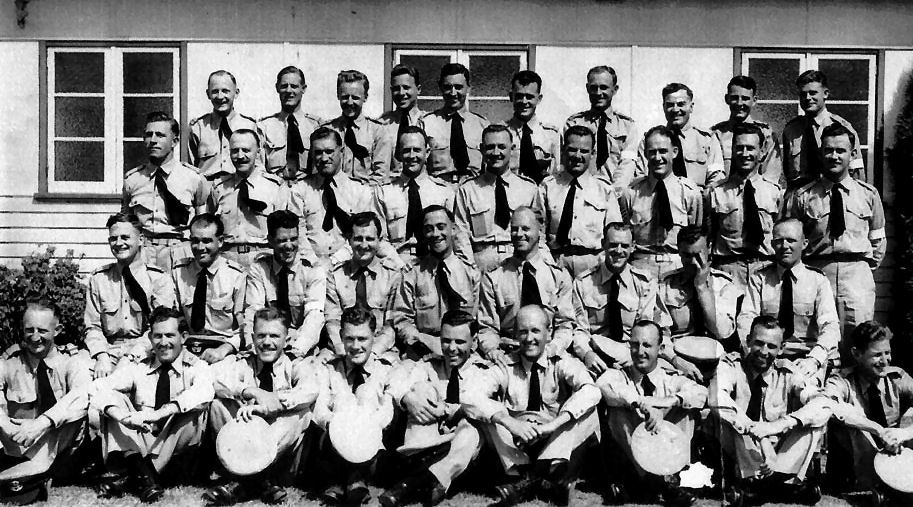
%20Engineering%20Course.jpg)

